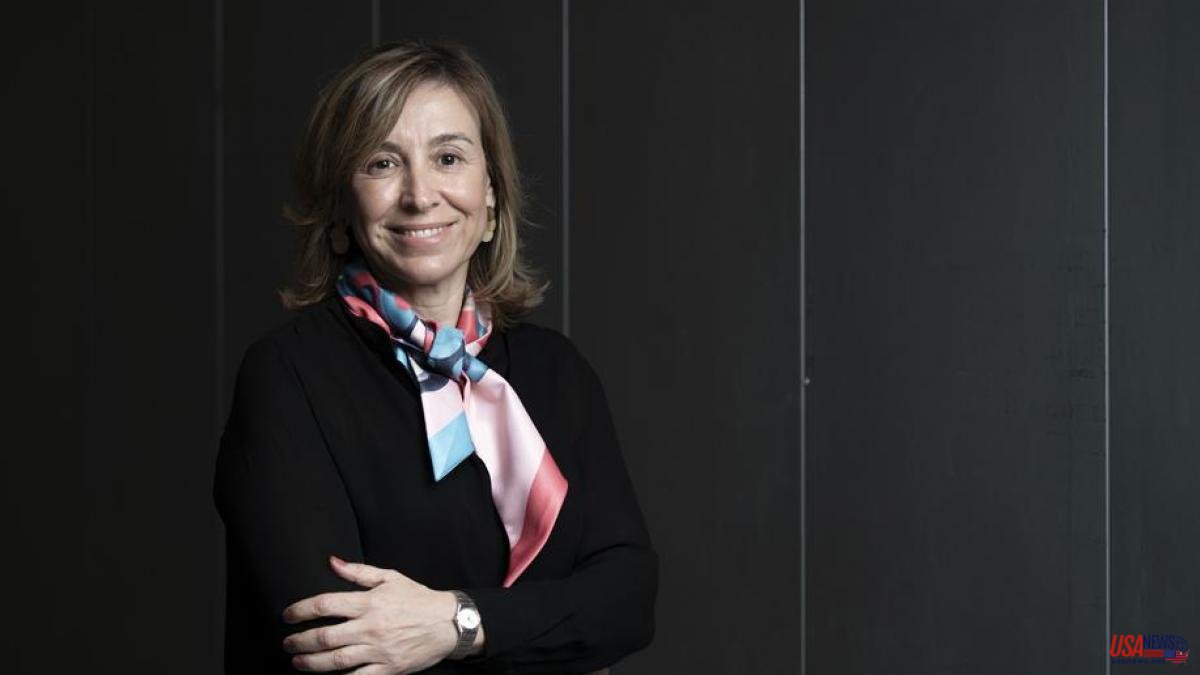The largest image operation of Spanish culture in a long time is the next Frankfurt book fair, which opens next Tuesday and in which Spain is the guest country. At the head is Elvira Marco, curator of the project, who attends this newspaper by telephone from Frankfurt, where she has been installed for a few days.
When did your mission start?
The road to Frankfurt began in 2019, it has been four years to spread our literature in Germany, and support translation with a specific program for this fair focused on German, English (where very little is translated, between 3 and 5 % of total production), French and Italian (our two natural markets) and Dutch, the latter due to the interest of publishers, who told us that it was a prescriber market for the Nordic countries. We also created a help line to translate book excerpts, which are used for the sale of rights and have turned out to be a very effective instrument. We have also opted for the internationalization of publishers, organizing meetings with their colleagues from other countries.
What guidelines did they give you?
Four years ago we set the strategy, the pillars of the project. The aim was to show the literature and culture of today's Spain, 31 years after 1991, when we were also guests of honour. It was important that linguistic plurality be seen, creation in different languages...
That's a difference from 1991.
The emphasis on diversity has a broad meaning. It also includes bibliodiversity, since there are the large groups but also the medium and small publishers, which produce half of the titles. In Spain there are more than 700 publishers, of which 400 go to Frankfurt this year, more than half, an unprecedented figure. Diversity is also about provenance, with authors originating from North Africa, Asia, Latin America, or other countries. And about the genres, because in addition to the narrative we promote the essay and poetry. We also wanted to show the value of Spanish, that treasure that we share with Latin America. And we were clear that the programming should show our commitment to equality: there are the same number of authors as there are female authors.
How have the five expressly honored people been selected?
The editor Jorge Herralde and the agent Carmen Balcells (1930-2015) are the two characters who are very connected to the professional part of the fair, who traveled extensively and who they have known like the back of their hand. Then, we have dedicated events to three authors who unfortunately are no longer with us but who had a great role in Germany: Carlos Ruiz Zafón (1964-2020) is the best-selling Spanish writer; Almudena Grandes (1960-2021) was already here in 1991 when she was a young author; and the enthusiastic German reception of Corazón tan blanco, the novel by Javier Marías (1951-2022), was essential for it to spread in other languages.
Have they shunned folklore?
We show the Spain of today, which flees from stereotypes, it is a country of the European Union that shares many things with the rest of the countries around us. Our literature reflects current issues and does so by moving away from clichés.
The Spanish pavilion of 2,000 square meters, has a great interactivity...
It's called The Theory of Cherries by Carmen Martin Gaite, who said that stories are like cherries, they intertwine and one leads to another. On the one hand, it represents all those who make it possible for the book to reach the reader: in an interactive tour with the reader appear The Editor, The Agent, The Translator (here we can play with untranslatable words...)...
What words?
For example, consuegra or sobremesa, which do not exist in German. Then there is La Designer, where the visitor can try to compose a cover. In the La Poeta installation we can listen to poetry. In another, experience how visually impaired people read, thanks to relief. In El Poema Universal, the visitor will contribute his own verses, and a machine will write a poem from it. There is also an immersive installation, Las Cerezas, where letters, quotes and words are projected onto the visitor, playing with various languages. Thanks to artificial intelligence, the visit will be different every day as the facilities will learn and change according to the reactions or the most used words.
Is tradition present?
An installation is dedicated to the poet José Hierro, to his poem Vida, you can play with the verses and compose poetry. The Cereza and Turquesa auditoriums have the Nebrija grammar printed. And, by Alfonso X el Sabio, the Cantigas can be heard in La Poeta.
And the accompanying artistic program?
Several exhibitions have already been inaugurated, such as 12 Histories of Contemporary Spanish Art, which connects literature and art, a retrospective of Pérez Siquier, who died a year ago, the one with 50 photographs with history, which can be seen in the street and covers the last 80 years of our lives...
And in music?
There are several performances, El Niño de Elche, Silvia Pérez Cruz, Fraskito, Sheila Blanco Javier Díez-Ena, who plays the theremin, or the Ttukunak duo, who plays the txalaparta... Gastronomy will also be represented.













